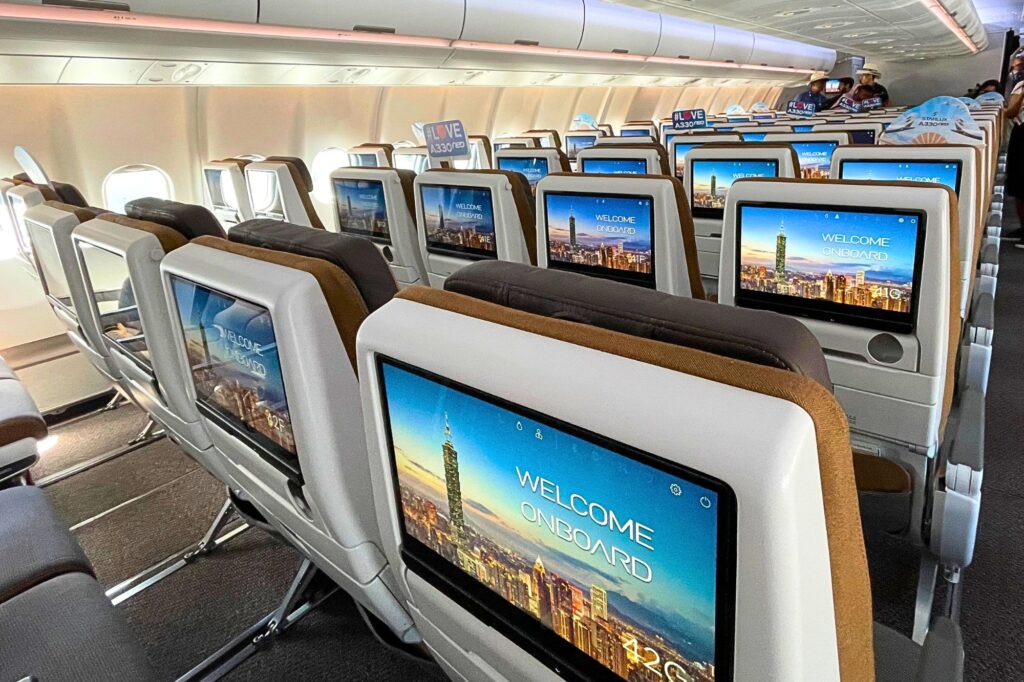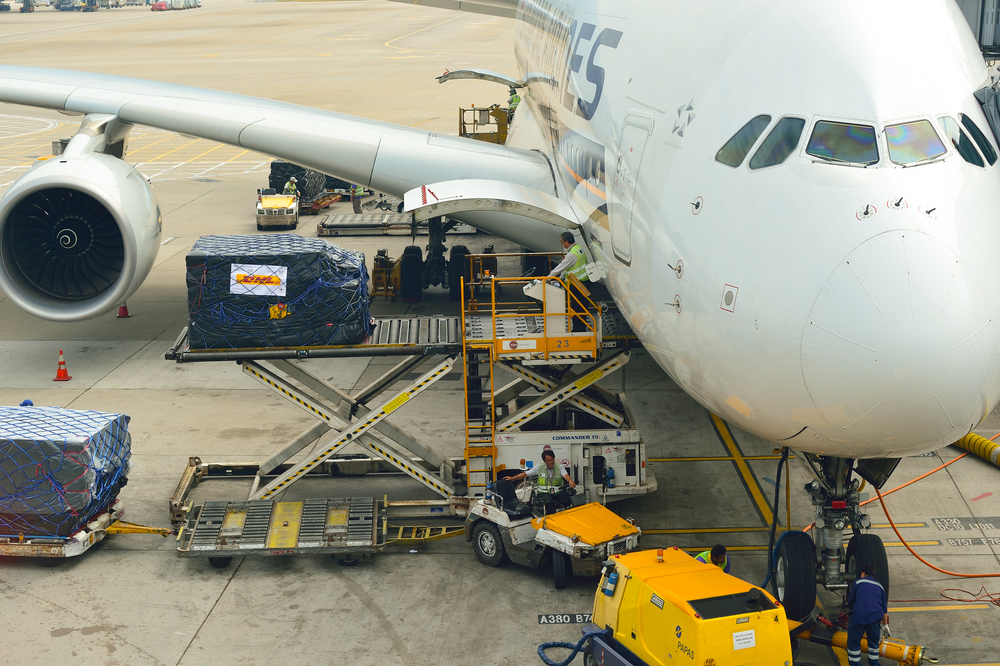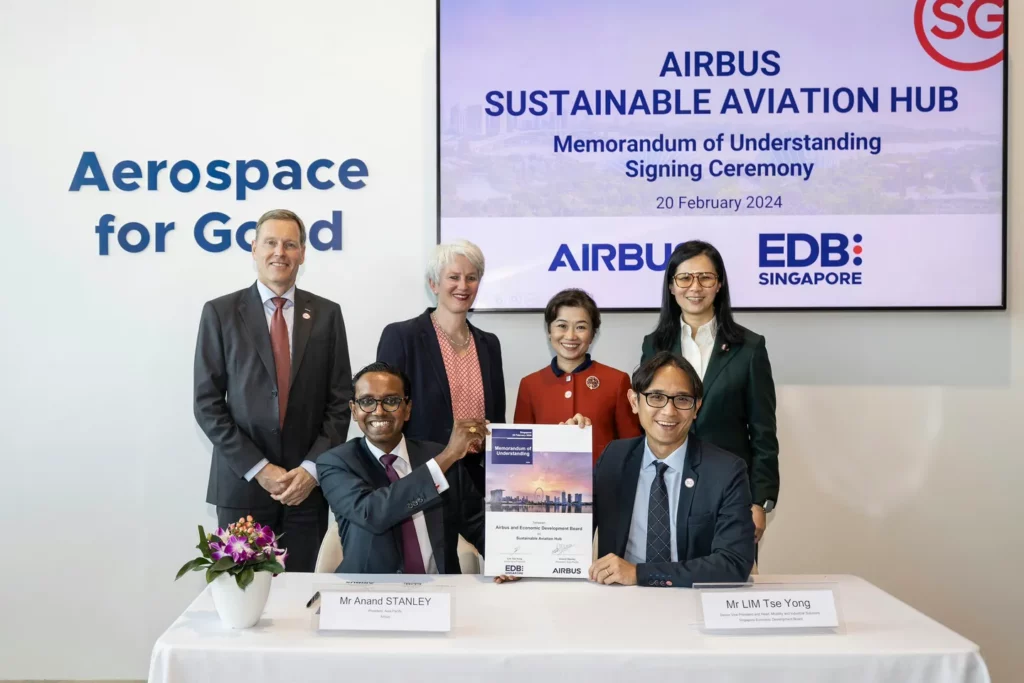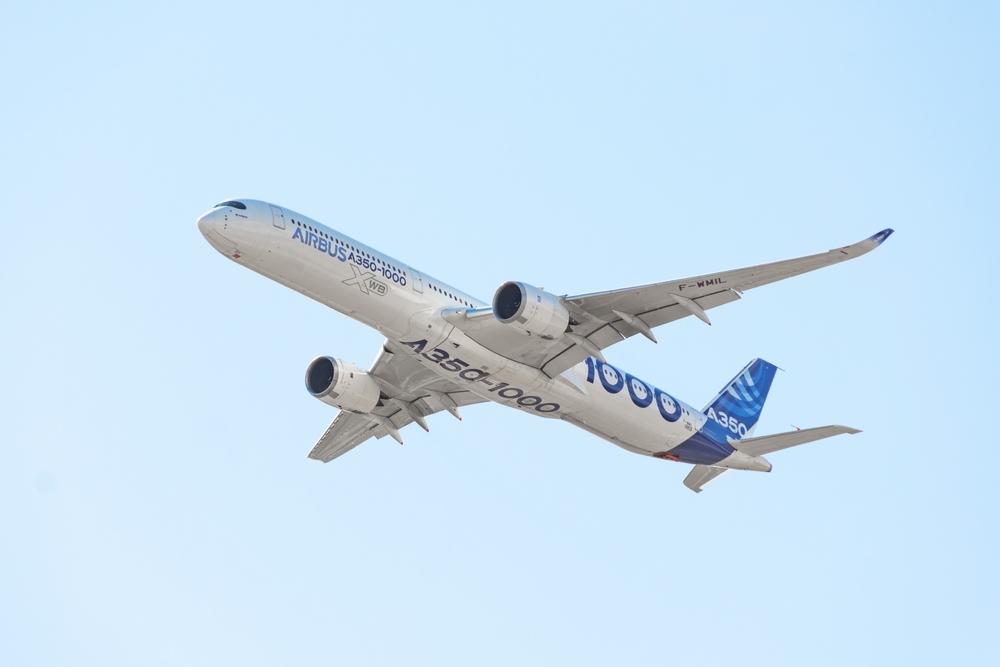When Anand Stanley was appointed President of Airbus Asia-Pacific in July 2020, the aviation industry was suffering greatly due to the impact of the COVID-19 pandemic.
And while this was true across the globe, Stanley was tasked with heading up the worst-hit region. According to Airports Council International (ACI), from 2019-2021 air passenger traffic in the Asia-Pacific region experienced a 62.7 % reduction. In comparison, the total world passenger traffic decreased by only 48.3 %.

In October 2020, three months into the position, Stanley told Channel News Asia that it would be a “long recovery” with Stanley adding “at the end of the day, we don’t need to just survive, but thrive”.
Four years on, Airbus is reaping the benefits of a surge in demand for aircraft and travel in the region. Asia-Pacific carriers are ramping up aircraft orders, and Airbus is strengthening its sustainable initiatives with the launch of a Sustainable Aviation Hub in Singapore.
It seems that Airbus has surpassed survival mode and is indeed thriving.
At the 2024 Singapore Airshow, AeroTime sat down with Anand Stanley for the next installment of our Executive Spotlight interview series, where he shared what makes Asia-Pacific a perfect region for widebody aircraft. He also revealed a bold forecast of over 20,000 more aircraft orders in the next 20 years.
Why Asia-Pacific holds the key to widebody success

There is currently a substantial demand for widebody aircraft in Asia-Pacific.
At the 2024 Singapore Airshow, Taiwanese carrier STARLUX and Vietnamese low-cost airline Vietjet both announced major Airbus widebody orders in a span of less than 24 hours. Full-service airlines like Cathay Pacific, Singapore Airlines and Philippine Airlines also announced major widebody orders in the second half of 2023.
So, why is there a surge in widebody orders from carriers in the Asia-Pacific region?
Stanley narrowed his answer down to three reasons, citing geography as the first, owing to the region expanding across archipelagos and islands.
“[Asia-Pacific] has such diverse geography,” he said. “Oceans, archipelagos…it is such a beautiful but large region.”
The second reason, Stanley said, is that widebody aircraft can easily connect populations across the region.
“Look at the widebodies,” he said. “They connect regionally, like the A330neo. It connects 60 to 80% of the world’s population from any of these countries.”
“And then you have the A350, which can connect any two points on the planet. So all of these are very useful,” he added.
The third reason for widebody demand in the region? Asia-Pacific is “an exciting place for demographics,” Stanley claimed.
“We have a young population, growing economies,” he explained. “We have growing GDPs. So all these put together, it’s a perfect recipe for widebody success.”
Data from the 2016 United Nations Development Program (UNDP) showed that more than half of the world’s young people live in Asia and the Pacific. Meanwhile, World Bank East Asia and Pacific Vice-President Manuela V. Ferro said in an October 2023 press statement that the East and Asia-Pacific regions remain one of the fastest growing and most dynamic regions in the world.
Stanley also shared a promising forecast in aircraft orders.
“To give you more of a prediction, we’re looking at another 19,000 aircraft of open demand in Asia-Pacific over the next 20 years,” he revealed. “And, more importantly, about 4,000 widebodies incrementally in this region alone.”
Air cargo growth in Asia-Pacific

According to a December 2023 report by the The International Air Transport Association (IATA), air cargo volumes for Asia-Pacific airlines increased by 7.6% in October 2023 compared to the same month in 2022.
The IATA said that carriers in the region are benefiting from ongoing growth in international cargo ton-kilometers (CTKs) on three major trade lanes: Africa-Asia (16.7% increase), Middle East-Asia (10.3% increase), and Europe-Asia (8.5% increase).
On February 21, 2024, at the Singapore Airshow, STARLUX placed a firm order for five next-generation A350F alongside three more A330neo widebody aircraft.
The A350F was launched in July 2021 and is expected to make its first flight in late 2025. Airbus claims that it is more fuel efficient, providing 40% lower fuel burn and CO2 emissions compared to the Boeing 747F.
According to Stanley, cargo has always been “big”, and there will be a continued demand for freighters in the Asia-Pacific region.
“We will still see in the next 20 years, a demand for over 400 freighters,” he said. “We’re talking just pure freighters. These aircraft have very specialized needs.”
“When you look at something like the A350F, it is a clean sheet modern design,” Stanley said, adding that the A350F is the only freighter in that category today.
Stanley went on to cite three reasons why the A350F would work well in the Asia-Pacific region.
“Number one, it’s modern and innovative,” he said. “Number two, it [offers] up to 40% less fuel emission than the freighters it is replacing. 40% less emissions. Think about it. That’s sustainability and that’s cost.”
The third reason, Stanley said, is specialized needs.
“A lot of the specialized needs we look at are connecting Asia-Pacific directly to the United States for high-value items like electronics, semiconductors or chips,” he said. “For these kinds of high-value items, a pure freighter like the A350F is the perfect solution.”
Sustainability in Asia-Pacific: Turning challenges into opportunities
Airbus is raising the bar when it comes to sustainability initiatives. All Airbus aircraft are currently capable of flying on a maximum 50% blend of Sustainable Aviation Fuel (SAF) and conventional fuel. By 2030, Airbus aims to enable all its aircraft and helicopters to fly with up to 100% SAF.
At the 2024 Singapore Airshow, Airbus signed a Memorandum of Understanding (MOU) with the Singapore Economic Development Board (EDB) to facilitate the establishment of a Sustainable Aviation Hub.

However, the Asia-Pacific is still lagging behind Europe and North America in terms of sustainability efforts and government mandates regarding the use of SAF.
So, how is Stanley able to pioneer sustainability initiatives in the region? He told AeroTime that what’s important is that sustainability first goes through Airbus products.
“Every product that we are introducing today immediately reduces about 25-40% less emissions than the previous generation,” Stanley said.
He also pointed out that the Asia-Pacific region is composed of countries with varying resources and capabilities for SAF production and use.
In Singapore, Stanley said that oil refining company Neste has a huge facility which gives Airbus “a lot” of SAF.
“So Singapore has a very good story,” he added.
Stanley also shared that during the AAPA (Association of Asia-Pacific Airlines) Assembly in November 2023, airlines committed to somewhere between 5-10% SAF usage by 2030.
“On top of that, we’ve seen a lot of governments also looking at mandating the use of SAF either at the airports or the airlines,” Stanley said.
According to Stanley, densely populated countries in the Asia Pacific region like the Philippines produce a huge amount of cooking oil that can be recycled. He also mentioned Australia’s capacity to deliver feedstock for biodiesel production.
“Each country has a unique wealth of resources that can be translated to SAF,” he explained.
Sustainability as a “journey”
During one of the flying displays at the 2024 Singapore Airshow, Airbus’ A350-1000 aircraft soared the skies using a 35% blend of SAF (a mix of cooking oil and tallow) supplied by Shell Aviation.

And while it seems like Airbus is well on its way to achieving its 2030 goal of using 100% SAF on all its aircraft, Stanley pointed out that sustainability is a journey, so the planemaker’s efforts will not stop there.
“Remember, we are looking forward to the launch of hydrogen ZEROe aircraft by 2035,” he said. “And let’s not lose track of the 2050 goals of net zero.”
“The journey never stops because as our purpose goes, we pioneer sustainable aviation for a safe and united world,” he added. “We will not stop.”

